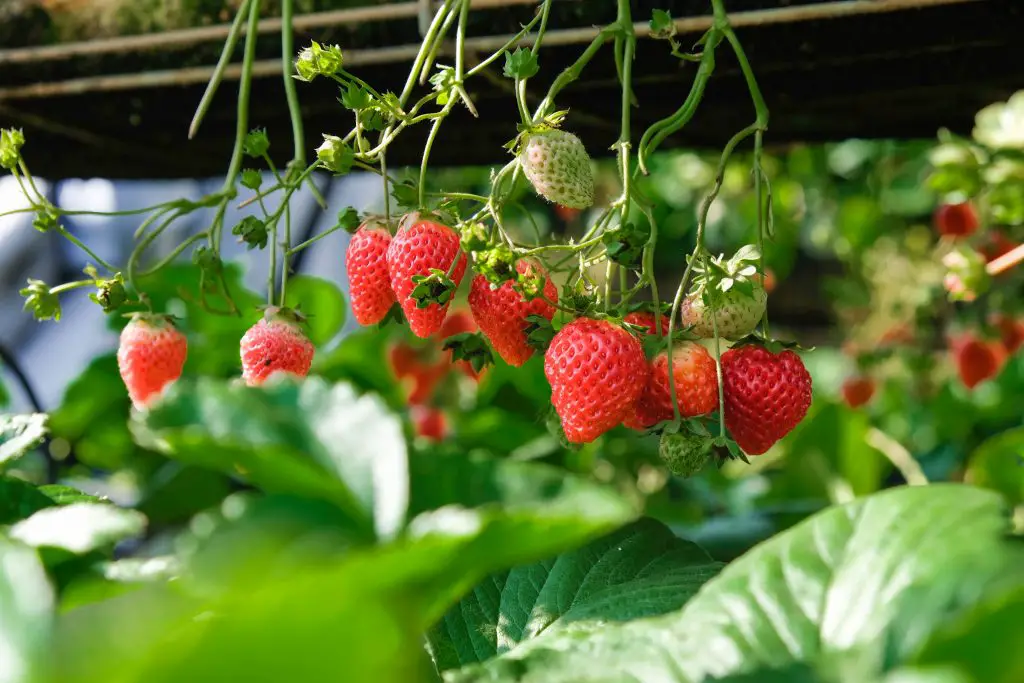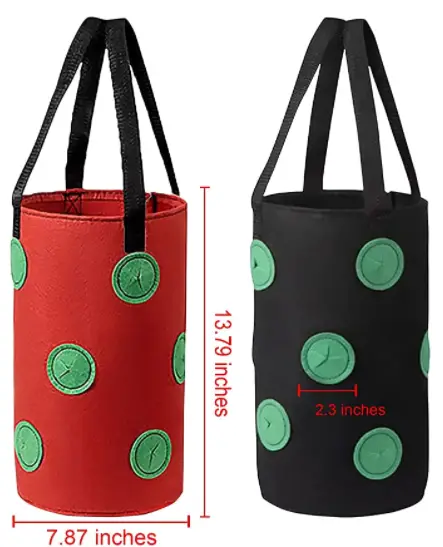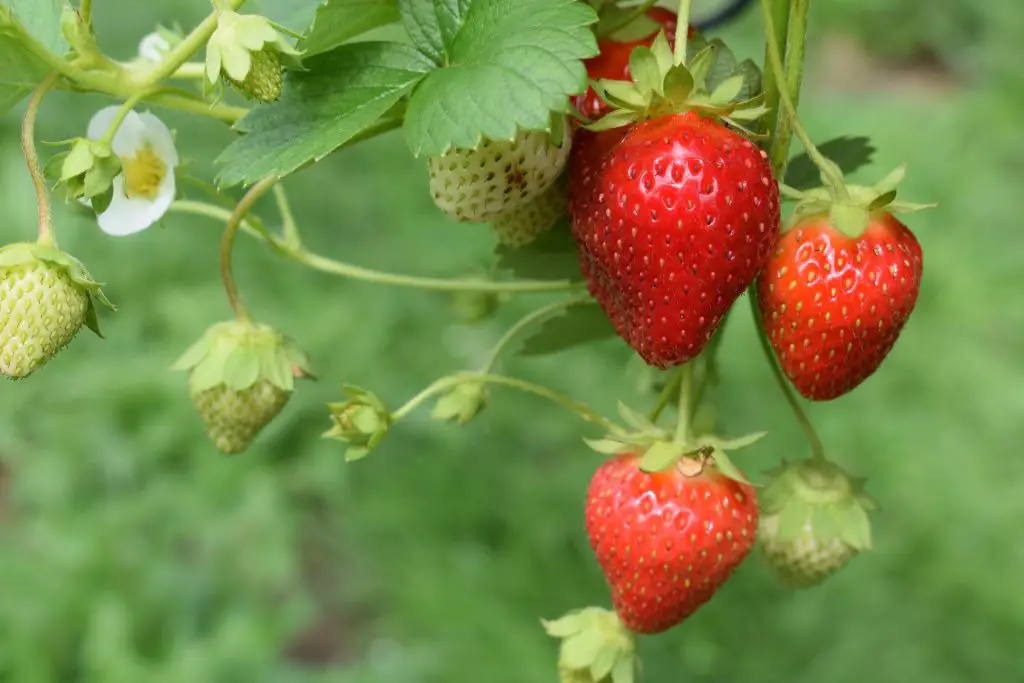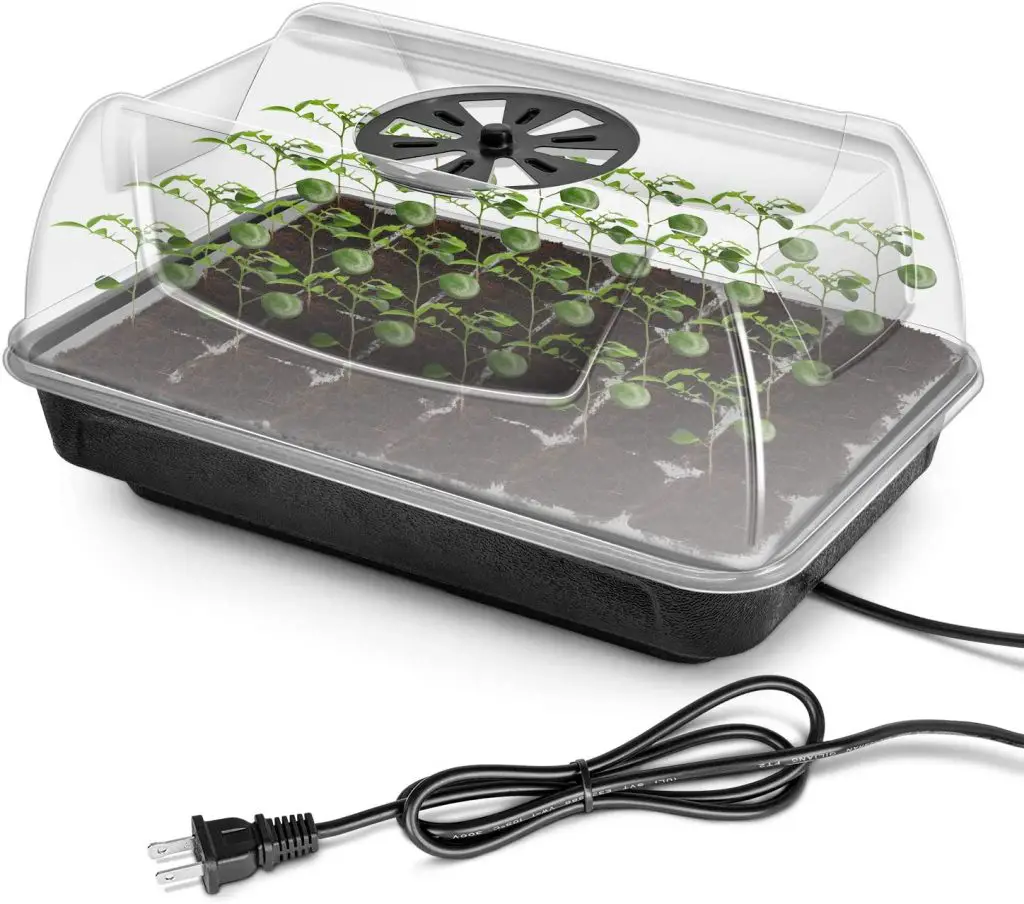Can Strawberries Grow In Shade? Strawberries are popular fruit to grow in the garden as they taste so much better than anything thing that can be store brought. However, these plants can take up quite a bit of space in your garden so can you use shady areas to grow strawberries in your garden.
Strawberries can be grown in partial shade however the degree of shading will affect the amount of fruit that is produced. A Turkish study carried out in 2007 found that constant shading of the plant resulted in a 40% reduction in the yield of the fruit when a 50% shade cloth was applied to the plant throughout the year.
The study also looked at the effect of shading at different times of the year on the plants and found the most critical time to shade the plants was during the fruiting period rather than during the flower initiation period.
However, one upside of shading your plants was that strawberry plants produce a greater number of runners. This is most likely to occur as a result of plants trying to ensure their survival by finding more favourable conditions with greater sunlight and also compensating for the reduced production of seed within the fruit itself.
The study also observed that the volume of fruit that was rotting on the plant increased by around 2 to 3 times which is most likely to have occurred because of an increased level of moisture leading to greater probabilities of fruit rotting.

How To Optimise Your Strawberry Output
As mentioned above growing strawberries in a shaded area will reduce the yield, however, there are several things you can do to help improve the output of your plants. The first thing is to reduce the number of plants that are exposed to partial or heavy shade as this will definitely reduce your yield.
A couple of strategies you can be applied is to grow the plants in containers or some sort of pot which can be positioned in locations that are sunnier. To increase the number of plants that you can fit into a small space it is advisable to use a specific strawberry container as it will allow you to fit more plants in.
The traditional strawberry containers have a number of holes within the side of a pot to allow strawberries to grow out the sides of the pot. Typically, the traditional container can hold around 6 to 8 plants. To buy a traditional strawberry pot like the one pictured below. Click on the link to visit Amazon.
However, the other alternative to growing strawberries in a traditional container is to use a strawberry tower which is a little bit more space-efficient because it has up to 5 layers and can fit around 20 plants per Tower. These towers are cheaper to purchase than traditional terracotta strawberry containers because they are made of molded plastic. An image of the strawberry container is provided below. If you want to see the latest price on Amazon click here.
An even more low-cost option is to use cloth containers that are designed specifically for strawberries they have the benefit of being able to be hung from rafters which will allow you to optimize the number of strawberries that you have available in your garden. Due to the material being relatively cheap to manufacture these types of products are the lowest cost but they also have the shortest life. To see the latest price on Amazon click on the link below.

Increase Your Strawberry Crop Using Grow Bags
Renewing Plants Regularly
One of the other common complaints that gardeners have is that the strawberries do not produce huge quantities of strawberries over time and in some cases they can become quite unproductive irrespective of the location that they are grown in.
The reason for this is that the strawberry plants are most productive in the first 3 years of their life after that time the productivity of strawberry plants will fall significantly to the point where you will not get any strawberries at all.
It is common for gardeners to experience this because to maintain productivity it is necessary to replace strawberry plants regularly which means throwing them out after 3 years and replacing the plants. However, many gardeners either do not know the age of their plants or alternatively cannot bring themselves to actually throw the strawberry plants out until they’ve been a couple of years in a row where the strawberry plants have not produced.
The simplest way to keep track of the age of your strawberry plants is to have three locations where they are grown each location should have plants of the same age, either, one, two, or three years old. The three-year-old patch should be replaced with new plants every year to ensure that production continues.
It is also important to note that if you do allow plants to get older than 3 years their productivity in terms of the runners that they produce also reduces significantly. This will affect the capacity of the gardener to be able to propagate additional plants to replace those ones that are old. This means that if you are not ruthless you were going to end up buying plants repeatedly from the local garden center over time.

Propagating Strawberry Plants
As mentioned above the easiest way to propagate strawberry plants is to use the runners that they produce during the growing season to create new sections of plants with roots. The rooting of the runners will have a naturally without your interference in many cases, however, if you want to make 100% sure that the runners do produce new plants you can pin them to the soil at the node where the roots are produced.
Many strawberry plants will produce several runners on a plant in a given year. However, as this process does divert some of the energy of the plant to the production of new plants it is advisable to limit the number of runners per plant to approximately 2 or 3.
To create the new plants from the runners leave them attached to the mother plant until the end of the growing season when the weather is starting to cool down. By this stage of the season, the plant will have established its own root system that is no longer reliant upon nutrients from the parent plant.
The end of the growing season should also be the period in which you remove the three-year-old plants after they have finished fruiting for the last time and replace them with newly propagated plants. When doing this it is also a good time to replenish the soil by adding additional compost and reapplying a fresh layer of mulch to ensure that the plants are protected from extremely cold weather in mid-winter.
If you follow these simple instructions you will ensure that you have an ongoing supply of strawberries and strawberry plants for years to come. I hope you found this article useful and have great success with your strawberries, if you have any comments or additional questions please leave them in the section below.
Relevant Articles
How To Make Strawberry Plants Produce More Fruit? (5 Academically Proven Strategies)
How Many Strawberries Can You Get From One Plant?
How Many Runners Will A Strawberry Plant Have?
Can You Plant Seeds From Store Bought Strawberries?


